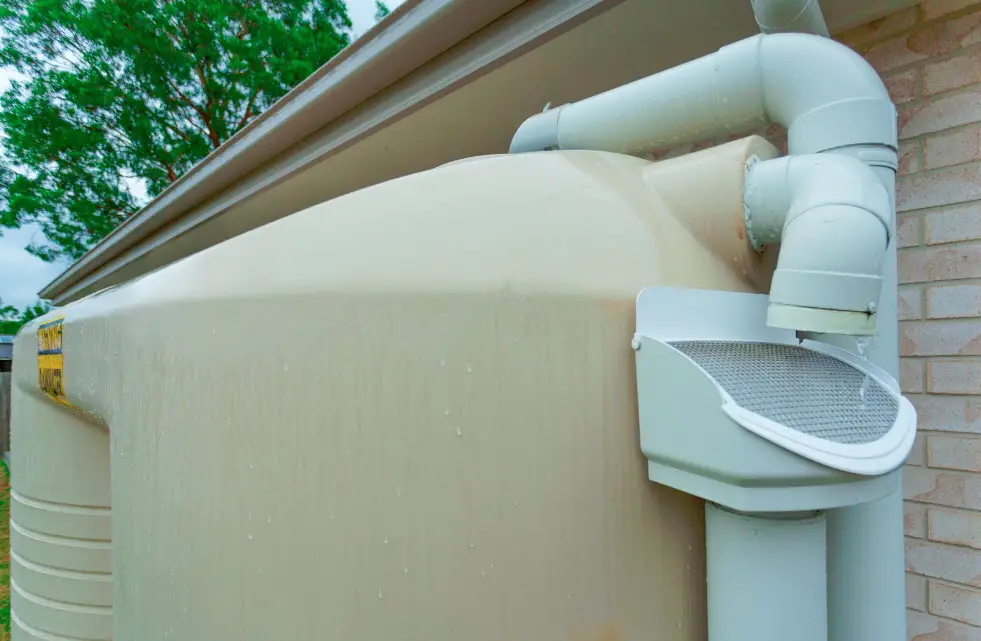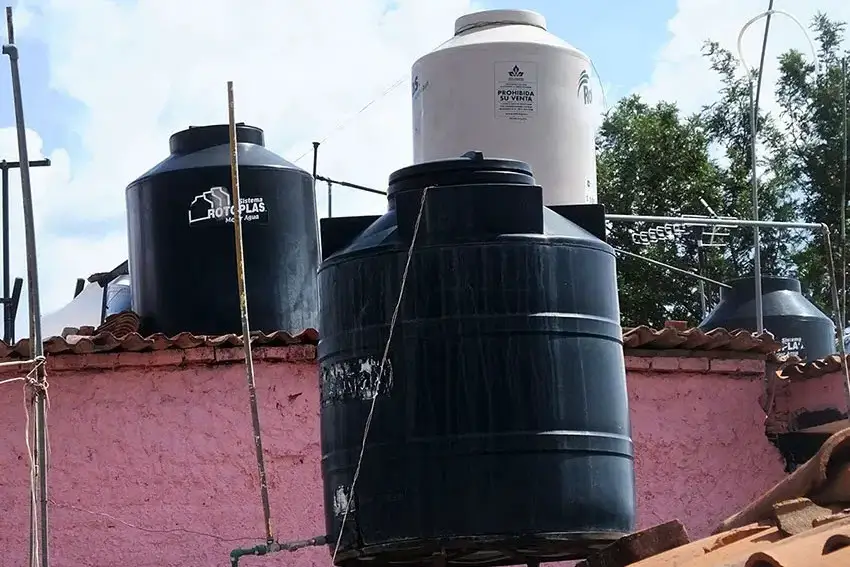Issues regarding the scarcity of water are quite common nowadays. It has become necessary to find innovative means for ensuring a sustainable source of water. Rainwater harvesting is a method to obtain and save water that is safe for drinking. This method could prove to be very useful for the conservation of water for years to come.
Page Contents
Rainwater Harvesting: The Definition
Rainwater harvesting means to collect water from rain and store it for later use. The rainwater is stored in a water tank which is made from a suitable material. Read on to find out interesting facts about harvesting rainwater.

Some Quick Facts
- Commercial rain harvesting can store up to 10,000 gallons while at home you can store anywhere from 55 to 1,000 gallons.
- Rain harvesting can significantly aid in water conservation.
- People can collect almost eighty percent of water coming from the rain.
- An hour of moderate rainfall in a 25 by 40 feet area can collect up to 600 gallons of water.
The Benefits of Rainwater Harvesting
There are a lot of benefits of harvesting rain. Firstly, you will have reduced dependency on the main water supplies. By adopting rain harvesting, you can save money and maintain a consistent supply of water if anything happens to the mains supply.
Also, some people choose rainwater over the main supply of water because it is natural and does not have any added chemicals. Collecting rainwater can also be beneficial to the environment. You will be able to reduce the negative effects of stormwater runoff in your region, keeping the environment disturbance-free.
Using Filters for Added Benefits
You’ll need to filter rainwater before drinking it, and it is necessary to know the type of filters and their benefits. A Sand-Gravel Filter is one of the most common types, and it is simple to install. There is also a Charcoal Filter which is also easy to use, and it can absorb any odors too. You can also opt for a PVC Pipe Filter or a Sponge Filter. Sponge Filters are straightforward and cheap to install.
Various Harvesting Methods
Following are the two main types of rainwater harvesting methods.

Rooftop harvesting
In rooftop harvesting, the water is collected from the roof right where it falls. The collected water is then stored in a tank which may be made from FRP or stainless steel.
The benefits of this method are that it is cheap, can be done at home, and is very effective for the groundwater. There are four major parts of a rooftop collection system:
- Catchments – This is the surface where the rainwater falls and is collected.
- Transportation – This includes the pipes that take the collected rainwater from the catchment to the tank.
- First Flush – You will need to flush away the first portion of rain showers to make sure the water isn’t contaminated.
- Filter – Water needs to be free from color, turbidity, and microorganisms, which is why filters are crucial.
Surface runoff harvesting
This type of rain harvesting method is highly beneficial for urban areas. It involves collecting water after it becomes groundwater and flows downhill from the Earth. Once water hits the ground, it becomes groundwater while a lot of it goes downhill, creating the “runoff” water.
This type of harvesting cannot be carried out at home. It might be made possible by highly funded projects from various organizations that work for the conservation of water.
Tank Materials and Equipment
It is essential that you choose the best kind of tank suitable for your needs. There are many variables to account for, such as tank size, length, and durability. All these factors will influence the performance of the tank in the long run.
Here are some common examples of tank types:
Concrete tanks
This is one of the most typical ways of water collection. It might not be suitable if you need a portable water tank because concrete is quite heavy. You’ll need to set a permanent spot for the tank where it will remain stable.
You can buy a premade concrete tank and place it on the site, or you can mold and pour your own concrete tank right there.
Concrete tanks are very economical and are a good choice if you plan to keep your tank underground.
Stainless steel tank
Stainless steel is strong and durable since it resists corrosion very well. Having a stainless-steel water tank can prove to be beneficial if you are planning for the long run.
Although the material will be expensive, stainless steel is easy to maintain and repair, extremely durable, and long-lasting. You will want to clean and sanitize it once in a while, with equipment such as that from Oiler Depot.
Fiberglass reinforced plastic tank
Fiberglass reinforced plastic tanks or FRP tanks are robust just like stainless steel water tanks. They are easily repairable and are an excellent option for collecting rainwater. It has seamless walls and high strength.
FRP tanks, however, are not recyclable, which might be an issue once it comes to the end of its life span.
Rainwater harvesting tools and resources
We’ve gone through the necessary points of rain harvesting and how it’s done, but how will you get started?
The following list of tools and resources can help you get on the right track:
- SamSam RWH Tool – Use this tool if you are planning to start rain harvesting at home. It consists of four necessary steps that will help you decide the best harvesting system for you.
- Rain is Gain Tool – This tool lets you estimate the total amount of water you can get from the collection and storage of rainwater.
- Rainwater Harvesting GIS Map – Using this method, you can learn how to collect, store, and use rainwater in the simplest ways.
- Multiple Use Services (MUS) – MUS is a creative way to allow new approaches for water services, especially for rural areas.
Conclusion
Rainwater harvesting is an innovative and effective way to collect water and store it for later use. This method can really help in improving water scarcity conditions in various areas.
Harvesting rainwater might seem challenging, but if you pay attention to the specific requirements, you can have your own source of water set up right at your home.
 A Very Cozy Home Home Decor Tips and Ideas
A Very Cozy Home Home Decor Tips and Ideas 
